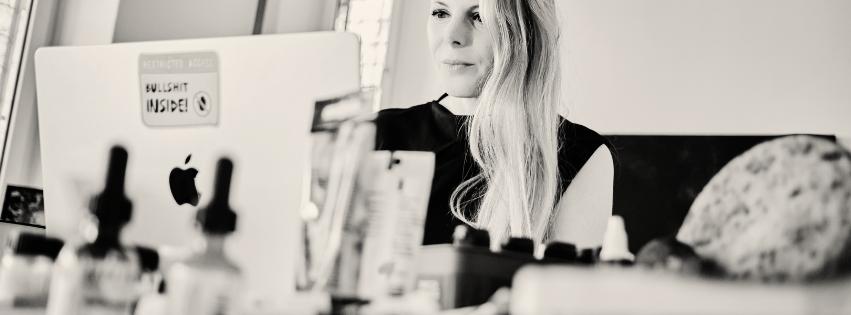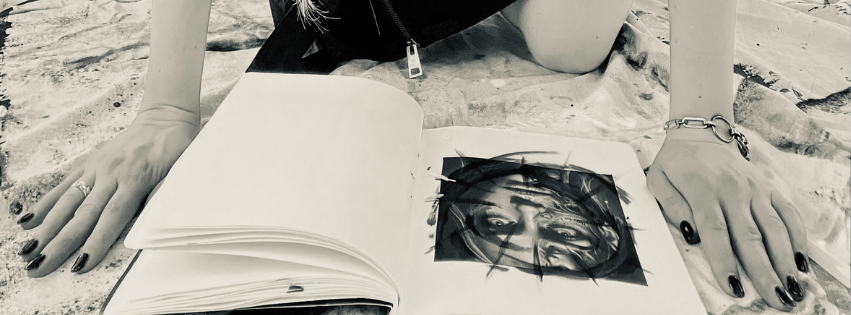
When I start working on a new art series, there is always a thought at the beginning that I can’t let go of. A theme that has taken root – usually deeply rooted in questions of neuropsychology, human experience, thinking and feeling. I want to understand it, grasp it, make it visible. It’s these ideas that won’t let go, even when everyday life has long since moved on.
So I do research. I read studies, articles, observations. And this is where AI begins to play its first role. Language models such as ChatGPT, Gemini or Perplexity help me to find well-founded information, to grasp connections, to discover new perspectives. They are tools, not oracles – they structure the jungle of knowledge through which I move. And sometimes they also take me down completely new dead ends – but well, anyone who makes art knows that detours usually lead to the goal.
Parallel to this: a stream of thoughts. Raw, uncensored, emotional. I write down everything that goes through my head – without order, without pretension. A text, like a wild garden. And again I reach for the AI. It helps me to sort my thoughts, to make connections visible, to find words where before there were only jumbled fragments.
Slowly, an inner image begins to emerge. It is still diffuse, but full of atmosphere, full of meaning.
From my collected, now organized words, a first prompt is created – a description that I enrich myself with lighting moods, emotions and textures before I pass it on to an AI image generator such as DALL-E or Midjourney.
And this is where the real experience begins – that moment when imagination, technique and gut feeling come together in a picture. I affectionately call this mindfuckWhen the AI presents me with something that is simultaneously wrong, fascinating and somehow… just right. A mental tightrope act that often opens up new perspectives. (There is also a blog article on the topic of experience & mindfuck in my art here)
But I rarely hit the mark with the images I generate. Sometimes it takes 10, sometimes 50 or more attempts to get a result that makes the right sound inside me. And sometimes the AI makes me laugh because its suggestions have about as much to do with my idea as a hippopotamus has to do with ballet. (Feel free to enter hippopotamus in ballet at ChatGPT / DALL-E – it’s funny).
The important thing is: I’m not looking for the perfect picture. I’m looking for a counterpart. For me, the generated images are a dialog with the AI – a reflection of what is possible now. A mirror of the times, of technology, of collective knowledge. That is also part of my art.
Once the right image has been found, the next step begins. I download it, edit it digitally – with Photoshop, other tools, and yes: AI is involved here too. Often unnoticed, in the background. Or very specifically: for example, when I remove a background or correct perspectives with one click. Sometimes it works amazingly well. And sometimes… not.
Then the picture rests. I look at it from a distance, discard it, change it, add to it. Sometimes it is blurred, distorted, taken apart. And when it’s ready, it goes to print – in grayscale, on canvas or handmade paper. It is still raw.
Now the analog part begins. I experiment with colors – often with acrylic and metallic, currently almost exclusively with (neon) oil paints. The combination of AI aesthetics and classical painting fascinates me. It is an encounter between the past and the future. Between old masters and luminous pigments, which often show another luminous dimension under black light.
My sketchbook is a valuable tool during this phase. I collect small printouts of my works in it and experiment with colors, combinations, intensities and moods directly on them. It is my laboratory – free, playful, intuitive. And sometimes colorful, blotchy and chaotic. But what would a real sketchbook be without a bit of artistic chaos? After all, it should suit me.

The original print is precious, well, expensive in any case. There is no going back. Every layer of paint has to be right. And yet – I work patiently, layer by layer, with long drying times that demand a lot from my impatient self. Me and patience – a love story with potential for conflict.
This is accompanied by texts – poetic, explanatory, sometimes cryptic. Here too, the AI is my counterpart, my sparring partner. I have trained them to use my own tonality, take inspiration from their suggestions, reformulate, discard, revise. Until a text is created that carries the image – and is carried by the image. With a bit of luck, it won’t sound like “written by an AI” when it’s finished, but like me – only with slightly fewer typos.
The end result is a work that has been created on many levels. With head, with heart, with technology. AI was not a substitute for creativity – it was part of my artistic process. A source of inspiration, a tool, a mirror of my time.
And perhaps this work will one day find its place in a home where it can continue to work – quietly, radiantly, multi-layered. And when it shines in the right light, I know:
All the madness was worth it.
Thanks for reading and best regards
AuroraGen
PS: ChatGPT suggested the following title for this Bolg post:“Synapses, sensors and black lights: a modern creation story“. Which headline do you like better?